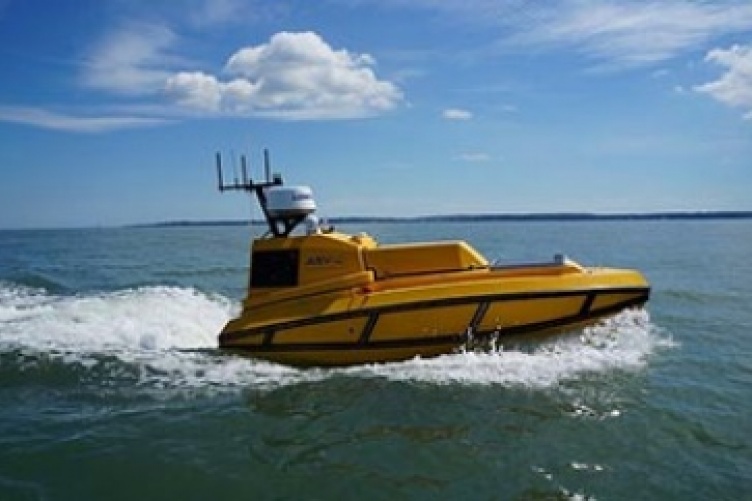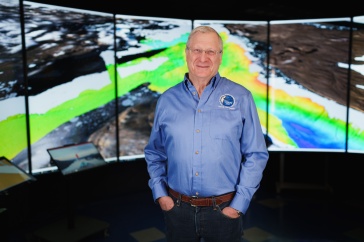
Researchers from the UNH Marine School and a robot developed by the university's Center for Coastal and Ocean Mapping are part of the crew searching for answers to questions around the disappearance of famed pilot Amelia Earhart. The search is being led by National Geographic Explorer-at-Large Robert Ballard.
The UNH robot known as BEN (Bathymetric Explorer and Navigator) is an autonomous surface vehicle that can explore the seafloor in waters that may be too deep for divers. It is providing Ballard and the crew aboard the EV Nautilus with a unique capability to map the seafloor in the shallow areas adjacent to the island where Earhart sent her last radio transmission. This area is too deep for divers and too shallow for safe navigation of the Nautilus to use its deep-water sonar systems. Maps of the ocean floor produced by BEN will be used by the Nautilus crew to target dives with remotely operated vehicles (ROV) in the search for remnants of the plane.
Evidence suggests Earhart made a successful landing, likely near the coral reef around the island of Nikumaroro, in the western Pacific Ocean, and was able to transmit radio signals afterward. However, no plane was seen by Navy pilots surveying the islands several days after her disappearance, suggesting that the plane may have been pushed off the reef into deeper water.
BEN is equipped with state-of-the-art seafloor mapping systems, including a Kongsberg EM2040P multibeam echo-sounder and Applanix POS/MV navigation system, which allow it to make 3D topographic and acoustic backscatter maps of the seafloor. The center has developed mission planning and “back-seat-driver" control software designed specifically for piloting BEN for the seafloor mapping mission. BEN was manufactured by ASV Global, in a design collaboration with the center.
The UNH crew consists of research engineers Val Schmidt, lead of this operation, KG Fairbarn and Andy McLeod, who are all aboard the EV Nautilus as well as Roland Arsenault, who is supporting the crew from shore. All are a part of the UNH Marine School’s Center for Coastal and Ocean Mapping development and use of robotics for marine science and seafloor mapping.
The expedition will be featured in a two-hour special titled “Expedition Amelia” that will premiere Oct. 20 on National Geographic.
-
Written By:
Robbin Ray ’82 | UNH Marketing | robbin.ray@unh.edu | 603-862-4864

















































